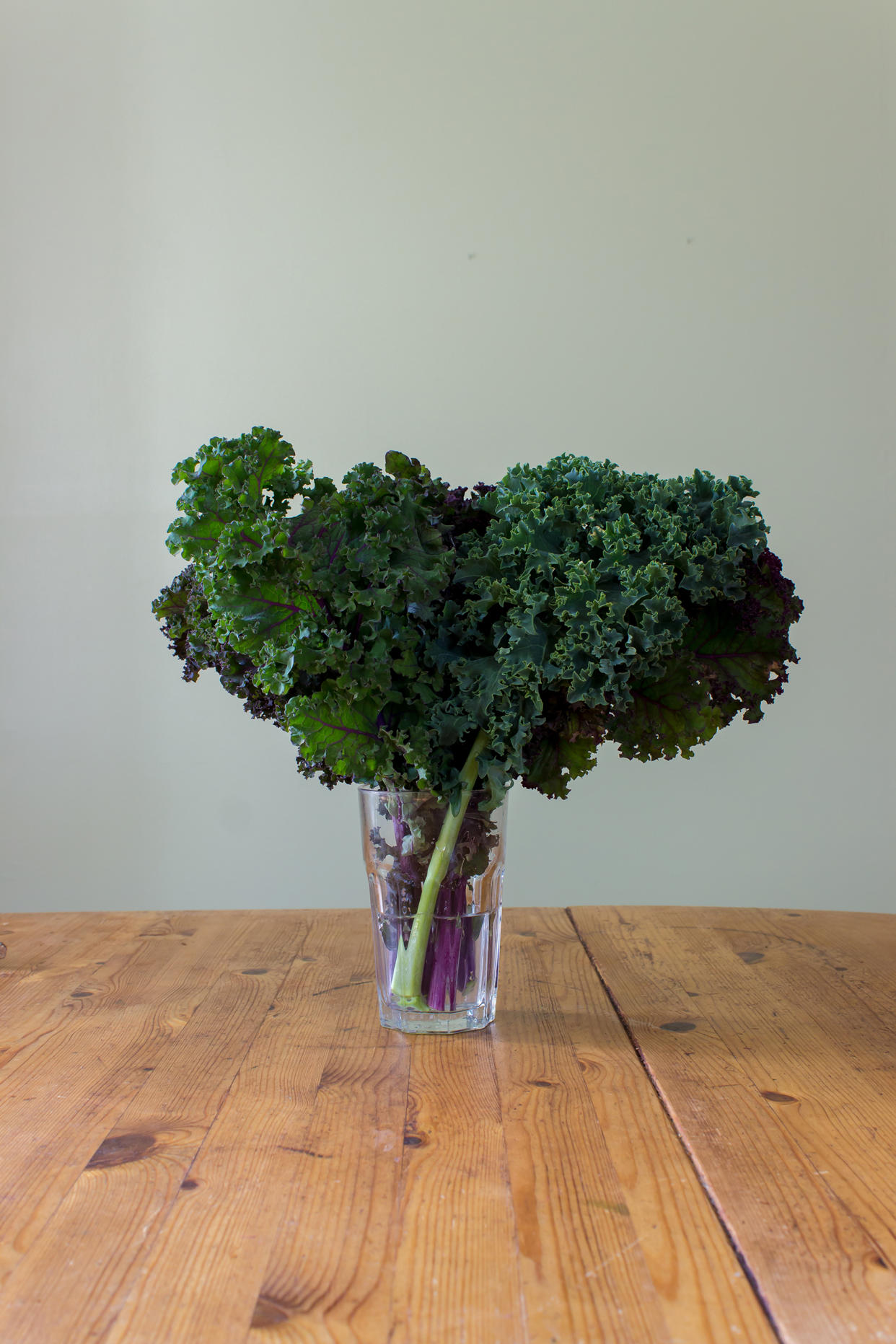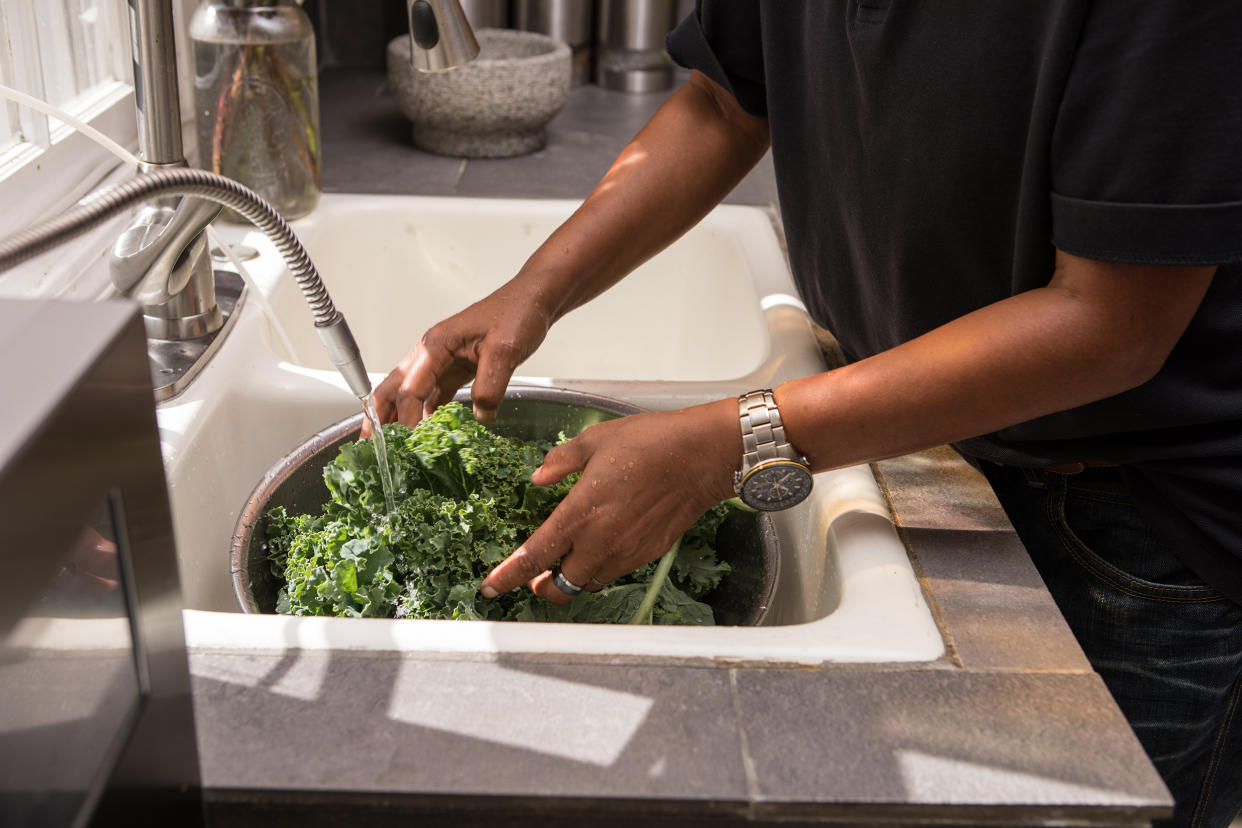How to store every type of salad green so they stay fresher longer
Most people know the crisper drawer in the fridge is meant for preserving produce and keeping veggies fresh. But is it a one-size-fits-all approach when it comes to keeping the many varieties of salad greens in shape until it's time to dine? Surprisingly, it's not!
To better our salad prep for the long game (you know, past pulling arugula straight from the box and tossing it with dressing), TODAY Food spoke to Abra Berens, the James Beard Award-nominated executive chef of Granor Farm in Three Oaks, Michigan, who sources ingredients from the restaurant's organic farm. Berens, whose veggie-focused cookbook, "Ruffage," earned a bestseller title in 2019, shares step-by-step instructions and tips to prepare and store your greens.
Related: Believe it or not, sometimes buying wilted greens is OK.
Head of romaine
Because romaine tends to brown as soon as it's cut the way an apple does, leave the whole head intact until it's time to prepare the salad.
Sometimes the outside leaves will be a little banged up from transportation, but don't remove them. Instead, leave them on so they can protect all the fresh, untouched leaves underneath.
Wrap the head in either a wax paper or a large plastic bag and place it in the drawer in the fridge.
Tight on space? Fridges can freeze up when they're full of food, so keep the romaine towards the front of the shelves when the crisper drawer is overpacked.
Romaine Caesar Gratin by Eric Ripert
Bunch of kale

This hearty green stores successfully a few different ways. Take your pick of Berens' easy methods:
Option 1: Take the whole kale bunch of put in a vase with water. Keep on the countertop or (if there's room) in the fridge.
Option 2: Place the kale bunch in a large plastic bag in the fridge, either in the crisper drawer or on the shelf toward the front.
Option 3: Kale will probably last the longest of other salad greens like lettuce or arugula and can keep sometimes up to two weeks. If you know you have a busier week ahead, rinse, strip the leaves of their large stems and cut the leaves up for easier use. Then just toss them into a large plastic bag and you have easy-to-eat, fresh greens ready to go.
Head of butter lettuce
Butter lettuce can be wetter than other salad green varieties. If it looks or feels damp when you bring it home, put it through the salad spinner or line it up on paper towels to get rid of the moisture.
Store the whole head or leaves in a paper towel- or cloth-lined plastic bag. When the towel is soaked, make sure to swap it out.
Cut the butter lettuce just before use (not in advance) and it will last longer.
Arugula and baby lettuces
5-Ingredient Watermelon, Feta and Arugula Salad by Kevin Curry
If the arugula or lettuces look like they've had a nice shower by the time you get home, spread the leaves on a paper towel or cloth to dry out or give them a quick spin in the salad spinner.
Pack the leaves loosely into a large plastic bag. This is especially important with arugula and baby lettuce because when packed too densely, they break down and decay faster.
Keep the bags of greens in the fridge in the crisper drawer or towards the front of the shelf.
The cut-ends of baby lettuces tend to brown faster and this variety doesn't last as long as arugula or chicories. So if you've bought these along with some other greens, remember to use them up first.
Pre-packaged greens
Buying salad greens pre-packed in a plastic box can be a convenient option. Anyone who opts for this may also encounter a bit of a slimy situation at the bottom after just a few days. To prevent all that trapped moisture falling to the bottom, Berens repackages the contents and then stores them.
"I usually open the box of greens and split it in half with another storage container to check the moisture and loosen the pack," she told TODAY.
Another option is to open the plastic box, line the top of the greens with a paper towel, close the box tightly and store the whole thing upside down in the fridge. This way, all the moisture falls to the opposite side — giving the formerly smooshed greens time to breathe. When the towel looks damp, swap it like you would with the butter lettuce.
Storing greens that haven't been refrigerated

"If your greens are floppy from being out of refrigeration (either at a farmer' market or got caught in a hot car on the trip home) give them a 10 to 20 minute soak in cool water," Berens told TODAY. "That will pull lost moisture back into the leaves and firm up the cells."
This will not only revive your greens immediately but keep them in better shape for longer than if they went directly from a warm bag into the fridge.
Before putting them back in the bag or storing them with the above methods (wax paper or plastic bags), make sure to lay them out to dry so they're not dripping with water.
And voila, farmer fresh!
